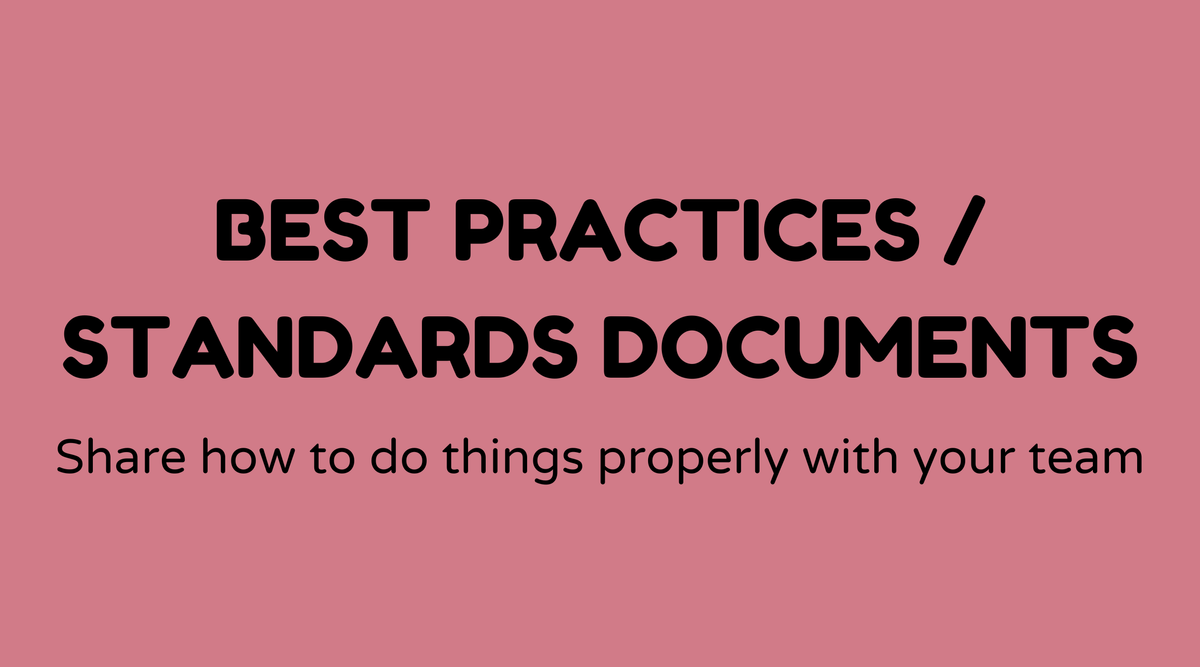Best practices / standards documents

Overview of Best Practices and Standards Documents:
When we examine the realm of best practices and standards documents, we are essentially referencing guides or benchmarks intended to enhance performance and quality across various fields. These documents are essential in many sectors—such as healthcare, software development, or education—because they provide a clear path to excellence. They consolidate expert knowledge, experiences, and established guidelines into easy-to-understand resources that assist organizations in achieving consistency and efficiency.
Why Best Practices and Standards Documents Are Important:
So, why should these documents matter to you? They serve as the foundation of any structured approach. They present validated methods for improving productivity and maintaining quality control. When an organization follows recognized best practices, it reduces errors and redundancies, ultimately conserving time and resources. Furthermore, compliance with industry standards often translates to enhanced trust and credibility among stakeholders and clients. For example, conforming to ISO standards can facilitate access to international markets, where compliance is frequently a crucial requirement.
What Are Best Practices and Standards Documents:
At their essence, best practices and standards documents are thorough guides that detail the most effective and efficient ways to attain specific objectives. These resources can be formalized as international standards, such as those from the International Organization for Standardization (ISO), or they might serve as informal company guidelines. They encompass a wide range of topics, from technical specifications to management principles and may directly influence legislation, quality assurance initiatives, and corporate policies.
How to Develop Best Practices and Standards Documents:
Creating best practices and standards documents involves a systematic approach. First, extensive research and analysis of existing practices within the relevant field are essential. Engage key stakeholders, including experts and practitioners, during the drafting phase. After preparing a draft, it will undergo multiple rounds of reviews and feedback to ascertain its practicality and effectiveness. It’s crucial for the documents to be flexible, as they should adapt based on new findings and technological changes. Regular reviews will ensure they remain current with the latest industry trends and developments.
Sample Agenda for Creating Best Practices and Standards Documents:
-
Kick-off Meeting:
- Introduction to the project scope and objectives
- Identify key contributors and assign responsibilities
-
Research & Analysis:
- Gather current practices and data
- Assess the effectiveness and identify gaps
-
Drafting:
- Write a draft based on research findings
- Integrate stakeholder feedback
-
Review & Revision:
- Conduct evaluations with key contributors
- Make necessary adjustments to the document
-
Finalization:
- Secure approval from decision-makers
- Develop a plan for sharing the document
-
Implementation & Monitoring:
- Create an implementation strategy
- Evaluate the impact and collect feedback
Examples of Best Practices and Standards Documents:
One prominent example is the ISO 9001, which specifies criteria for quality management systems. Many organizations, like Toyota or Amazon, adopt these standards to maintain consistency in product quality and service delivery. Another instance is the IEEE standards for electrical and electronic systems, which help ensure the safety and reliability of technology products on a global scale. The PMBOK (Project Management Body of Knowledge) by the Project Management Institute is also recognized widely among project managers worldwide.
FAQs
What is the function of best practices documents?
- They guide organizations in implementing the most effective and efficient methods for tasks, based on professional consensus and evidence.
How frequently should standards documents be reviewed?
- It is usually advisable to evaluate these documents annually or whenever there is a significant change in the industry or technology.
Can small businesses benefit from best practices documents?
- Certainly. They provide small businesses with insights from industry leaders, assisting them in adopting efficient processes that may otherwise be challenging to access due to limited resources.
Are best practices universally applicable?
- Not always. While they offer a strong foundation, organizations may need to customize them to fit specific contexts or regulatory frameworks.
How do standards affect international trade?
- Standards facilitate trade by ensuring products are safe, reliable, and of good quality, making them more acceptable in international markets.
Where can I find industry-specific standards?
- Organizations like ISO, ANSI, and sector-specific bodies offer access to standards, often available for purchase or through memberships.



